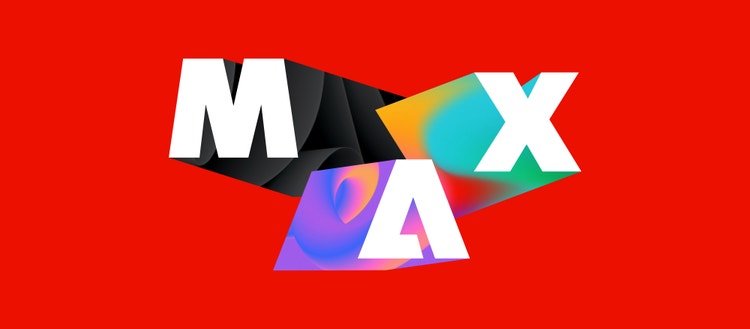Adobe Max is fast approaching, and this year’s global gathering of creative professionals, communications experts, and innovators is enormous. The conference, held from October 14 - 16, 2024, in Miami Beach and online, is poised to reach tens of thousands of attendees from more than 200 countries.
It’s an incredible collection of creatives sparking today’s most compelling marketing campaigns, breathing life into global brands, and forging connections between companies and their customers.
While attendees each have unique creative outlets — from graphic designers and photographers to marketing managers and brand directors — one common thread runs through everyone’s work: they want to reach an audience.
This is easier said than done.
Today’s content ecosystem is crowded and fractured, while audience attention is fleeting and fragmented, making capturing and engaging an audience uniquely challenging.
What’s more, with technology playing an increasingly prominent role in the creative process and content distribution across channels and platforms, creating collaborative, cohesive, and consistent content that resonates requires a strategic approach that integrates creativity with data-driven insights and technology.
Relationship Design for the Adobe ecosystems helps solve this, allowing creatives and their partner brands to best combine creativity, data, and technology.
Relationship design explained
Customer and audience relationships are too important to be managed. They must be created and cultivated with intention.
Relationship design, a fresh approach to building meaningful connections with audiences, is Ogilvy One’s powerful framework for creatives in the Adobe ecosystem, supporting creatives in fostering brand, business, and customer value by designing personal, data-driven relationships at the intersection of creativity and technology — powered by AI.
Relationship Design is a symbiotic process wherein brands thrive by enriching the lives of their consumers, and consumers, in turn, find value in their brand experiences. It’s an end-to-end approach to the customer experience, informed by insights from four lenses that encompass all stages of the relationship design process, including:
- Business: core ambitions and competitive gaps
- Brands: core values
- Customers: a full-dimensional customer
- Technology & data: an enabling architecture and ecosystem.
It’s a process enabled and empowered by generative AI (Gen AI), which allows brands to combine cutting-edge marketing insights, creativity, and technology to match the consumer’s pace.
Relationship design in action
Relationship Design for the Adobe ecosystem amplifies the technical functionality of Adobe Content Supply Chain with a fluid and proprietary way of working that operates and enhances creativity through data and technology.
Even though Adobe Content Supply Chain offers a technological response to this market need, many brands need help to unify an array of strategies siloed to different products, such as Adobe Experience Manager, the Adobe Creative Cloud, and Adobe Analytics, that comprise Adobe Content Supply Chain.
Ogilvy One’s Relationship Design methodology empowers creatives to unlock the powerful potential of Adobe's Content Supply Chain, converting siloed products and creative processes into a powerful, unified ecosystem.
In this way, relationship design ensures that technology investments align with core business objectives but also empowers creatives to foster authentic connections with audiences that drive measurable business impact.
For example, Ogilvy One aligns Adobe Content Supply Chain implementations with core business objectives, driving measurable impacts like accelerated time-to-market and increased content production efficiency. Ogilvy One’s relationship design framework also leverages Adobe's suite to amplify brand values and deliver personalized experiences, forging stronger customer connections that translate to increased brand loyalty and higher customer lifetime value.
For many creatives, technical developments and analytical requirements can hinder creativity and slow content creation. They can feel overwhelming, stifling creativity and hindering collaboration.
Relationship Design acts as a bridge, simplifying these intricate processes and allowing creatives to harness the power of tools like Adobe Experience Manager, Creative Cloud, and Analytics without getting bogged down in technical details. This ultimately fosters an environment where creativity can flourish unimpeded.
Creating connections with impact
Across touchpoints — digital and physical — brands must craft experiences that resonate with people and produce authentic connections and relationships that resonate and last. As we look ahead to 2025 and beyond, the fusion of creativity and technology will continue to shape our content ecosystem.
Whether you’re a visual artist or a CMO seeking to amplify your brand's voice, Relationship Design offers a path to navigate the complex content supply chain while preserving your creative spark and creating impactful relationships by design.
Adobe Max is celebrating this synergy, and we are excited to be joining creatives at this global event. Ogilvy One will be attending and sponsoring Adobe Max.
To learn more about Relationship Design in the context of the Adobe ecosystem, be sure to join Roberto Fara, chief creative officer of Ogilvy Spain, and Ravi Pal, Global CTO of Ogilvy One, for a dynamic session where we will discuss the Content Supply Chain landscape — how it has drastically changed our ways of working, generated new ways to deliver customer value and how at the very core creative impact is the key to an optimal customer experience.




